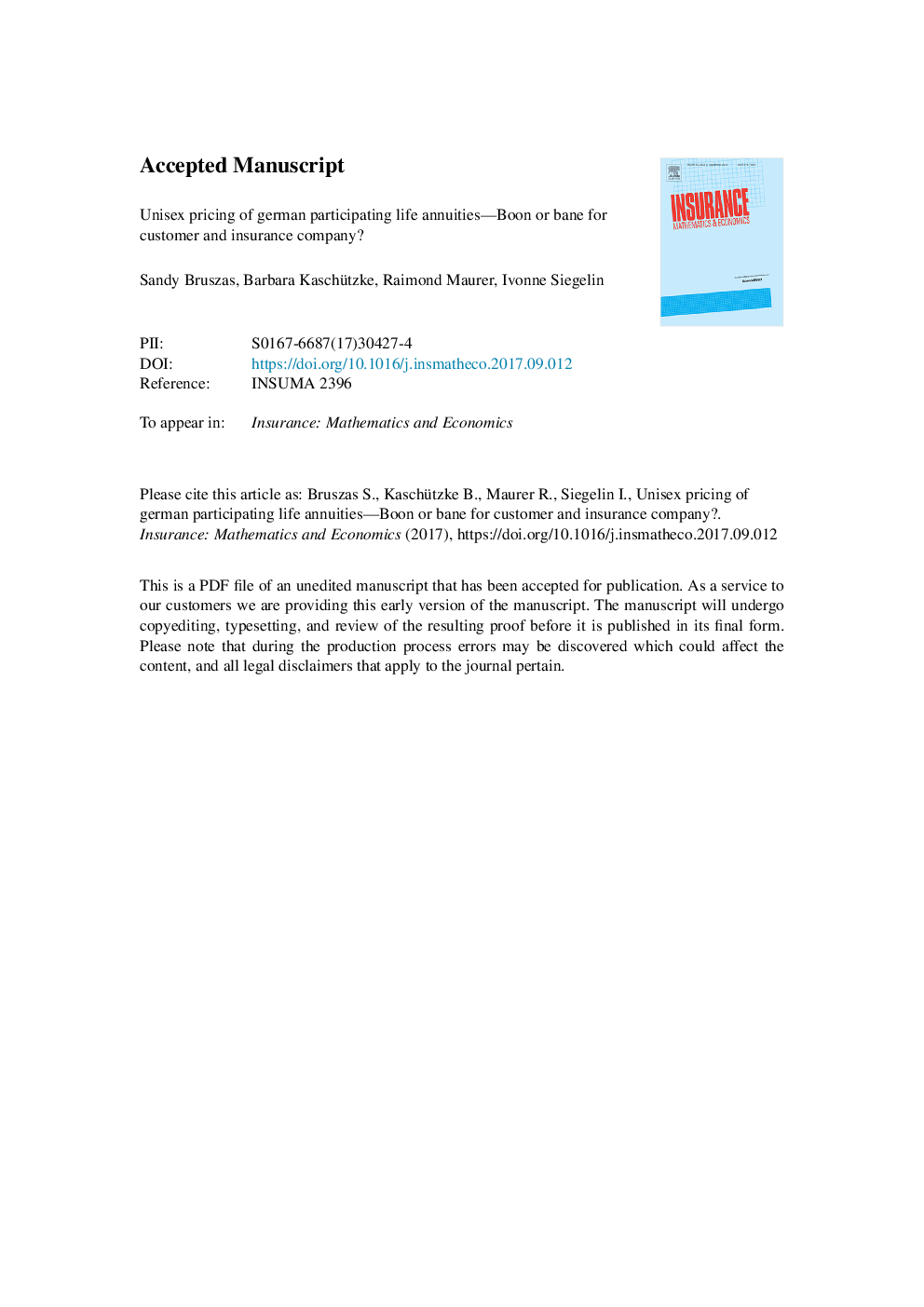| Article ID | Journal | Published Year | Pages | File Type |
|---|---|---|---|---|
| 7354768 | Insurance: Mathematics and Economics | 2018 | 41 Pages |
Abstract
This paper explores how the requirement of gender-neutral premium calculation and the new rules of surplus participation for participating life annuities (PLA) affect insurance company's profitability and policyholder's wellbeing. We analyse real data observed for annuity prices in the German market followed by the examination of the impact of unisex calculation, allowing for different assumed and realised gender compositions. To this end, we develop a realistically calibrated asset and liability model for a PLA with stochastic mortality, interest rates, and equity returns. We show that for males, the disadvantages of PLA's unisex pricing as compared to the gender-specific calculation are substantially lower, if we measure them by considering a lifetime utility that accounts for both distributed surpluses and stochastic mortality. For the insurance company, the gender mix composition turns out to be less important than the capital market influence. Moreover, participating life annuities turn out to be an efficient means to share actual mortality experience between insurance company and the annuitant, and can be, at least to a certain extent, considered a substitute for indemnity longevity hedge.
Related Topics
Physical Sciences and Engineering
Mathematics
Statistics and Probability
Authors
Sandy Bruszas, Barbara Kaschützke, Raimond Maurer, Ivonne Siegelin,
